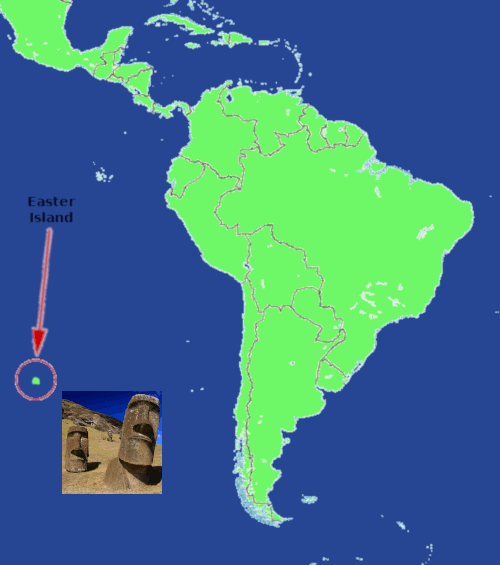Easter Island leader says Moai statue might be better left in British Museum
Dec. 17, 2018
Q: The mayor of the Chile’s Easter Island territory said last week that the British Museum might be a better home for a massive native statue taken by British seamen 150 years ago. The remote island is more than 2,000 miles from Chile’s mainland. Where is Chile?
Circle the area on this map

Q: Chilean officials and some other island dignitaries recently went to London to seek the return of the stone statue on display at the museum. The statue is one of hundreds of “Moai” carved by which people who first settled the island?

A. Incas

B. Mayans

C. Polynesians

D. Spanish

Q: Rapa Nui Mayor Pedro Edmunds Paoa said he would rather see the British Museum offer financial help to preserve the basalt statues “buried, ignored and discarded” across the island. What creates basalt stone?

A. Limestone kilns

B. Meteorites

C. Sedimentary deposits

D. Volcanoes

Q: Rapa Nui was named Easter Island by European navigator Jacob Roggeveen who landed on the island on Easter Sunday in 1722. He was . . .

A. Dutch

B. German

C. Portuguese

D. Spanish

Q: European diseases devastated the native Polynesian population in the 19th century. And, about half the island’s population was abducted by slave raiders from the country just north of Chile. What nation is on Chile’s northern border?

A. Brazil

B. Peru

C. Uruguay

D. Venezuela

Answers for this quiz: Click here

